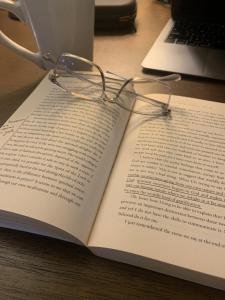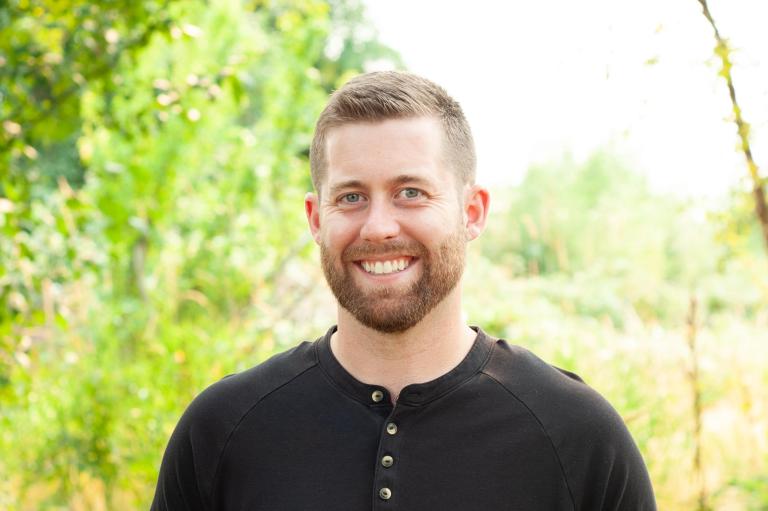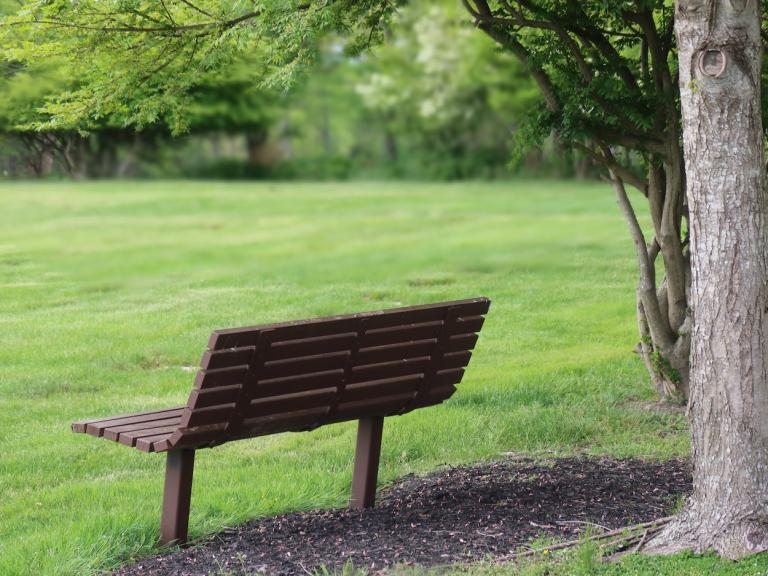As we got Patmos up and running, I began to read the words of Christian mystics more, those who also found meaning in the silences of life. I was questioning a lot for myself at this time:
- What is the meaning of my life?
- Who are the guides I can trust to follow?
- Where can I go to find those who will companion me?
In 2015, I stumbled upon a translation of St. Teresa of Ávila’s The Interior Castle by Mirabai Starr (affiliate link!) and I was immediately caught in a trance. Her words spoke to my inner longing in the most bizarre of ways, spanning across continents, languages, traditions, and five hundred years of history.

It wasn’t perfect (many of her experiences didn’t quite connect with me – her religiosity and experience with a personified God, in particular), but in her I found an Elder with sensitivity and grace, providing guidance for my own inner life. As I read, I began to find myself scribbling notes in the margins, summarizing every paragraph in my own words, and relating her teachings to my own experience of the Divine.
In 2020, five years later and a world away from that initial moment of connection, I found myself returning to these notes for guidance in the context of the coronavirus and COVID-19. I was searching for the words of such an Elder, a trusted companion to walk with me into the unknown spaces of our world and of my own heart.
What follows in the next few posts is my edited collection of summaries and notes from my time with Teresa.
About Teresa of Ávila
Teresa Sánchez de Cepeda y Ahumada lived in 16th century Spain at a time of great political and religious upheaval. Columbus had launched the European colonization effort of the “New World” just twenty years before her birth and right as she began to crawl, Martin Luther ignited the Protestant Reformation. She lived in a time of great unknowing, witnessing boundaries of human understanding being pushed past and political (which, at this time were also religious) norms being demolished seemingly every day.

In the midst of this, Teresa had a childhood best defined by her attempts to stretch beyond the limits given to her by her family and society, seeking to create her own identity.
At the age of seven, she and her brother ran away from home, animated by the romanticized idea of dedicating their lives to religious martyrdom. In a protective act, her uncle stepped in, stopping them, and returning them safely home. A few years later at 14, her beloved mother died and she found solace in the social scene of her town, becoming a social butterfly with her natural social skills and responding popularity. Her father, seeing her blossom in this way, sent her away temporarily to be educated (and socially subdued) at a monastery in Ávila.
It was here where Teresa found her identity, her path to living a meaning-filled life. Joining the Carmelite Order at age 20, despite strong opposition from her father who had never intended that she actually become a nun, she would dedicate her life to an engaged spirituality as she lived amongst her sisters.
Throughout Teresa’s life, she would find herself in positions of teaching and companionship, naturally becoming a leader within the Order. Younger nuns would look to her for advice and spiritual insight, even as her body went through what modern experts assume was some form of epilepsy. Teresa would experience bouts of extreme bodily sickness that would leave her in bed for days, often accompanied by detailed and imaginative visions.
One of these visions was of the interior castle she would later write about. In the vision, she experienced her own soul as a castle with many rooms, with God at the center, beckoning her inward. It was this traversing of the inward and interior journey that would come to best exemplify Teresa’s spiritual life; she sought inwardly for the Divine, whom Mirabai Starr refers to in her translation as “the Beloved”, who sat at the very core of her being.
Teresa recognized that her inner journey, and thus our inner journey, as well, would be lifelong and that our movement in the castle today, as it was then, is certainly not only in one direction.
She writes that once we have entered through the doorway, we spend our entire lives exploring, venturing in and out of rooms, constantly retracing our steps. Our inward journey and the unfolding understanding of the Divinity within us might seem as if it is three steps forward and two steps back. But without this exploration of our interior castle, she says, we remain but “broken souls,” in need of a miracle.
In today’s language, I think of it in these words: unless we go inward and find our Inner Guide, we remain adrift in the waves of the exterior world.
Throughout her life, Teresa was the embodiment of strength in the face of adversity, whether it be from her own illnesses, sexism within the hierarchy of the Church, the Spanish Inquisition, or near constant ideological persecution. She was a natural leader, founding several new monasteries and writing extensively, always pushing the Church to reform itself. At her core, she was a mystic seeing the world with contemplative eyes.
From Mirabai Starr, who has researched Teresa’s life and translated many of her works:
“What can Teresa of Ávila offer us five hundred years after her death? Teresa models the living balance between action and contemplation, serving others and developing an interior life, engaging in passionate human relationships and surrendering to the divine mystery. She was an ecstatic mystic and a skillful administrator, a fool of God and an insightful psychotherapist, a penitent when she needed to be and an epicurean when she could be…Teresa of Ávila was fully, deeply, unapologetically herself.”
If you’re interested in exploring Teresa’s teachings and how they might guide you in your own story, I’ll be hosting an evening of journaling based on her teachings in March. Sign up here for more information!
Opening the Door and the First Dwelling of our Soul
Beloved, I have no idea what to say here. If you want me to do this thing, you’re going to have to speak through me.” – Teresa of Ávila
According to Teresa, the journey deep into our interior castle begins with prayer. However, this is not simply the reciting of memorized lines or hurried through devotionals; rather, this kind of prayer is one of great intention and vulnerability. For Teresa, the kind of prayer that opens us up entirely is the kind that can serve as a doorway into our soul.
Whether it be silent prayer or vocal prayer with genuine reflection, any prayer that is accompanied by reflective awareness – an intense act of “being” – can bring us into the loving presence of the Spirit or “That Which is Bigger Than Us.”
Imagine being out on a hike and experiencing the pure beauty of the moment, so much so that you have to stop, stare, and let out a quiet exclamation of “wow – this is beautiful.” This is a moment of prayer – an opening of ourselves to Spirit moving in our lives. Sometimes it happens intentionally and sometimes it happens to us, leaving us grasping at what has just occurred.
As part of her training with the Carmelite Order, Teresa worked intentionally to pray each day, opening herself to the Spirit, even as she sat still in the darkness. And despite her training and her experience, she knew the difficulty of prayer, writing “All the trials we endure cannot be compared to these interior battles.”
Nevertheless, the interior journey, be it an intense battle or a delightful wade into the water (and at times it is certainly both), is begun by the opening up of oneself to God.
Through prayer, we gain entrance to the first of seven dwellings within our interior castle. And as we cross the threshold into our own inner life, in with us slithers the reptiles of our lives: the pain caused by trauma, our inner narratives, frustrations, and hatreds.
It all enters with us because each reptile has so become a part of us.
In prayer, especially silent prayer, they express themselves most consistently as the “monkeys in our head.” They want to dissuade us from exploring the depths of our interior, pointing our attention in other directions hoping that we might stumble.
But as we venture inward, reptiles slithering along with us into the first dwelling, we may also begin to cultivate our humility and self-knowledge: humility that we might recognize our own limitations and self-knowledge that we may know we live within something larger than just us. It is in this first dwelling that we begin to both glimpse our own imperfections and experience a solidarity with That Which is Bigger Than Us.
(This first dwelling has often become the domain of therapy in secular culture, as therapists create the space necessary for people to venture into their own inner life.)
If we can continue inward, holding this humility and self-knowledge (and many of us will understandably turn around at this point), we begin to learn to let go of our fears and our ego-driven (dualistic) thinking; we learn to recognize that the reptiles that slither across the floor do not have power over us. We turn toward Mystery and open ourselves to an experience larger than our own.
And there’s a response! Although it might be without our even realizing it. When we learn to “take a long, loving look at the real” in our own lives, we may begin to feel an embrace from That Which is Bigger Than Us: the feeling of peace when the monkeys finally calm and silence overcomes us.
The Second Dwelling of our Soul
In the second dwelling, the humility and self-knowledge we’ve cultivated in the first begins to grow and as we cross into this new room, we listen intently for the Divine’s voice coming from within. Uncertain of what we might hear, or if we will hear anything at all, we are unsure of what exactly we’re listening for.
But, with this growing awareness we are cultivating, we begin in this dwelling to find the voice of God in things and people familiar to us: that of our friends, our family, good people doing good things, in sermons, in YouTube videos, in books. We begin to learn to recognize the Divine “in the details”, the minute moments of everyday life.
For most of us, there will be no loud voice in the sky, but rather the more personal and discrete message veiled by everyday things, or as the poet Mary Oliver, refers to it: “the ordinary, the common, the very drab” (from her wonderful poem, “Mindful”). This is the great power of becoming present to the “right now,” which mindfulness, meditation, and healthy spirituality will always draw us toward.
Yet the second dwelling is also one in which the reptiles begin to move with more haste and nip and bite at our heels. As if they know we are making progress in our spiritual life, they come more and more alive, working adamantly to sideline us. They get in our way, attempting to stop our movement within the castle.
They have but one goal: to force us back through the doorway and back into the material world, where we find our self-worth in our looks, our purchases, our titles, and our achievements.
Unlike in the first dwelling, where we had limited self-knowledge and were naïve to their intentions, now we are aware of their goals. We begin to understand that our resistance to them is not one of violence, but of letting go and turning our attention and intention to the Divine.
(Centering Prayer is in many ways focused on this: letting go of our reptiles in our lives so that we may better respond to the Divine calling from deep within us.)
It is here that we must excavate our egos to understand the origins of these reptiles (the pain caused by trauma, our own anger, our inner narratives and shadows). By doing this soul work, we begin to allow ourselves to let go and open more to God/Spirit/That Which is Bigger Than Us.
Continue reading Part 2: “Teresa of Ávila’s Path into the Heart Cave”
Teresa is just one of the spiritual Elders who have made a major impact in my life. For more, check out my blog post, 24 Wisdom Teachers Who Have Changed My Life.













